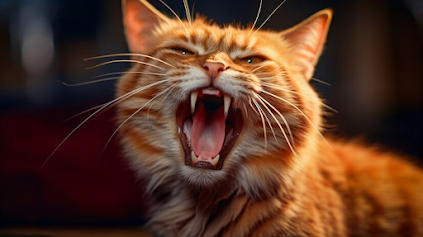Solve Aggression Between Household Cats
What Causes Domestic Cats to Become Aggressive?
Hostility isn't a finding; it is important for typical cat conduct and is firmly impacted by early friendly history and openness to people and different creatures, orientation, social setting, dealing with character, and numerous different factors. Animosity between cohabitating felines can come in a few structures with various causes. Dread, uneasiness, clinical issues, the unseemly presentation of another feline, and the absence of assets all can add to feline hostility inside a family.
Inadequate Socialization
Socialization is the most common way of setting up a feline to appreciate connections and be OK with different creatures, individuals, spots, and exercises. Preferably, socialization ought to start during the "delicate period" which is somewhere in the range of 2 and 7 weeks old enough for little cats.
Many felines don't get satisfactory socialization and because of this, issues are bound to emerge when at least one grown-up that poor person has been associated with their own species is involved. Since these felines need proper encounters, they don't grasp typical cat correspondence and decorum and are probably going to have extraordinary and unseemly reactions to seeing another feline. They might take off and conceal in dread, or they might go after trying to drive the other feline away from their own space.
During satisfactory socialization, the creature ought to foster a suitable social way of behaving towards their own species and those others with which they have been fittingly mingled. This will decidedly impact social conduct communicated further down the road.
RELATED: Asthma-in-cat.
Introducing the New Feline
Appropriately presenting your new feline with your current felines is fundamental, as presentations frequently lay the preparation for their relationship. If your ongoing feline has lived with different felines and was consistently cordial it tends to be exceptionally enticing to simply let your new feline out in a similar space as your ongoing feline. You might expect they will simply sort out it; in any case, felines don't generally become friends the correct way and a negative starting gathering can set an unfortunate starting point for their relationship.
Feline-to-feline presentations ought to be done gradually, and with the requirements of each feline remembered. It is hard to fight the temptation to have the felines meet right away so they can start a brilliant kinship; be that as it may, assuming that you set your new feline free in the home various things can occur with not exactly heavenly outcomes.
Your current feline might feel that their region has been attacked assuming the novice is simply set free to investigate. This could prompt your laid out feline inclination risk in their home and thus that prompts conduct changes or it very well may be forceful (hostile) towards the new feline. That doesn't help both of them!
From the new feline's viewpoint, it is uncertain of where it is. Each fragrance and sound is new and a potential danger prowls everywhere. If you have embraced your new feline, it has likely encountered a controlled number of sounds and scents. It might likewise be accustomed to living in a little space and keeping in mind that you maintain that it should encounter 'opportunity', surging it can leave it feeling extremely wrecked and focused.
RELATED: Treatment-and-prevention-of-cat-fleas
How to Handle Feline Aggression
- Hostility alludes to a wide assortment of mind-boggling ways of behaving that happens for various reasons under different conditions. Early intercession is ideal — contact your veterinarian and credentialed feline conduct proficiently to help when you notice strain and animosity between felines.
- Recognize any triggers that resentful your felines (for example representation of outside felines, noisy clamors) and change the climate with the goal that they are limited/eliminated.
- Establish an advanced cat climate that takes into consideration normal adapting systems. This incorporates various raised single feline estimated resting roosts all through the climate, numerous litter boxes (the quantity of litter boxes ought to rise to the number of felines in addition to one) in various areas all through the home, different taking care of and watering stations, different scratching posts/cushion, and so on.
- Keep felines isolated when not regulated or assuming animosity is gentle to serious, or keep them isolated consistently to try not to have negative relationships with one another.
- Step by step, introduce the felines utilizing counterconditioning and desensitization and observing intently for indications of stress and uneasiness.
- Learn and screen non-verbal communication and at the principal sight of hostility, following, or harassing, you ought to emphatically divert the assailant feline with a toy or treat away from the other feline.
- Keep away from discipline. This incorporates shouting, splashing with water, clearly clamors (shaking jars of pennies, applauding) hitting, and so forth. Discipline can help the feline to detest the other feline more by partnering the discipline with the other feline and can cause heightened dread and nervousness and break the human-creature bond.















No comments:
Post a Comment